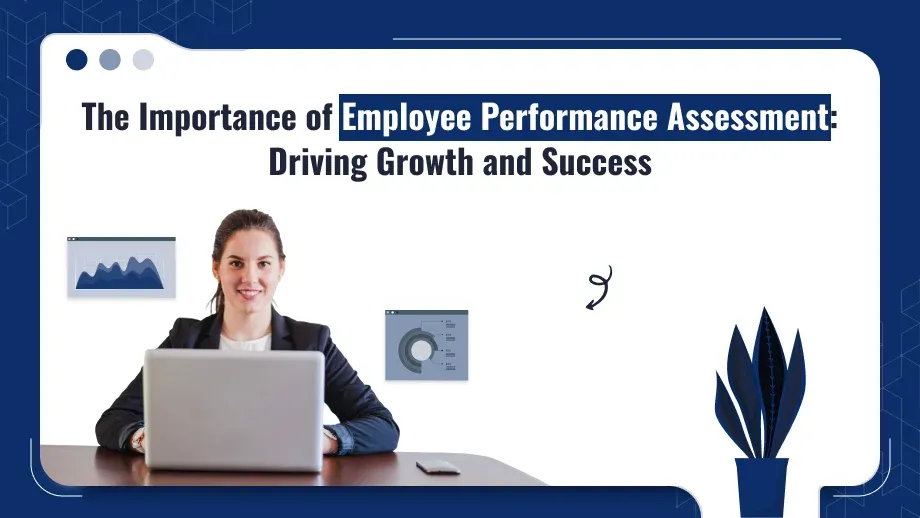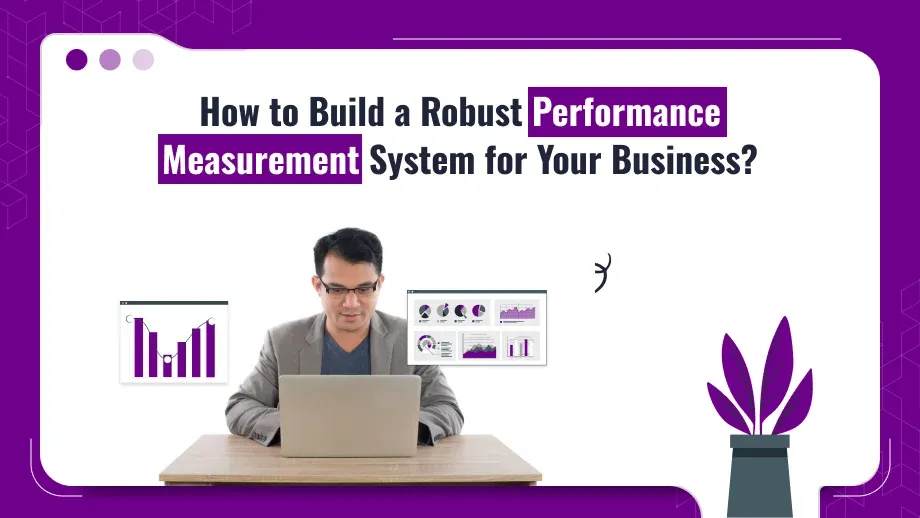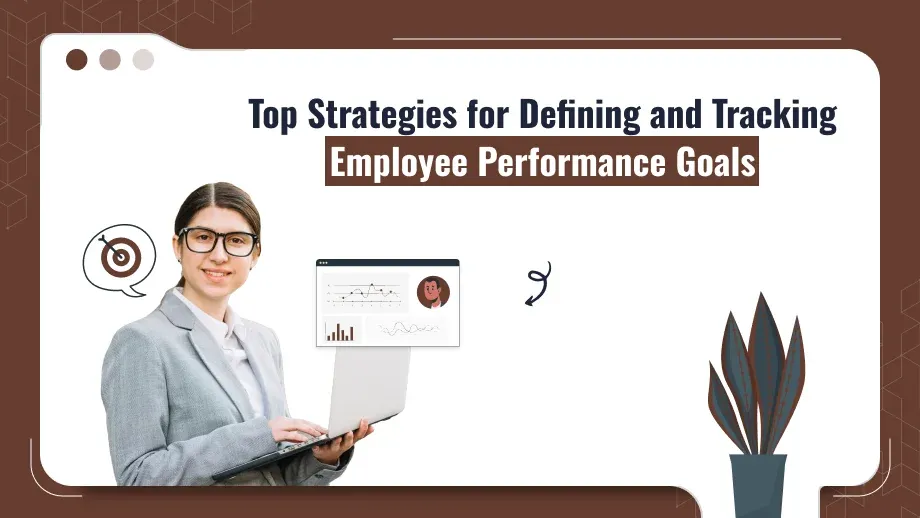
In today’s competitive commerce scene, understanding and employee performance Assessment is significant for organizational victory. Worker execution appraisals not as it were offer assistance in distinguishing high-performing people but moreover give bits of knowledge into zones where change is required. As businesses endeavor to accomplish their key goals, viable representative execution Evaluation gotten to be necessarily to cultivating ability, driving development, and improving generally productivity.
This web journal investigates the noteworthiness of representative execution appraisal, its strategies, challenges, and best hones, along with how these evaluations contribute to the by and large victory of organizations.
What is Employee Performance Assessment?
Employee performance assessment is a precise prepare of assessing an employee’s work execution against set guidelines and targets. It includes measuring different variables such as efficiency, quality of work, abilities, and behaviors to pick up a comprehensive see of an employee’s commitments to the organization.
The appraisal handle can take numerous shapes, extending from yearly surveys to progressing input components. In any case of the organize, the extreme objective remains the same: to give significant experiences that can educate choices with respect to advancements, proficient advancement, and by and large workforce administration.
Key Targets of Employee Performance Assessment
Alignment with Commerce Goals
Performance evaluations guarantee that person objectives are adjusted with the organization’s key goals. This arrangement advances a bound together heading for all representatives, guaranteeing that everybody is working towards common objectives. When workers get it how their commitments affect the broader goals, they are more likely to stay persuaded and engaged.
Identifying Preparing Needs
Through execution assessments, organizations can pinpoint expertise holes and preparing necessities. This recognizable proof permits for focused on proficient improvement programs that address particular needs, eventually driving to a more competent and talented workforce. By contributing in representative employee performance management, businesses not as it were improve person HR performance management but moreover construct a culture of persistent improvement.
Enhancing Representative Engagement
When representatives get helpful input on their execution, they feel esteemed and caught on, which can altogether boost assurance and inspiration. Locked in workers are more likely to contribute emphatically to the organization, driving efficiency and innovation.
Succession Planning
Performance evaluations offer assistance in recognizing high-potential workers for future administration parts. By assessing execution and potential, organizations can make strong progression plans that guarantee progression and soundness. This proactive approach to ability administration plans businesses for future challenges and opportunities.
Boosting Accountability
Regular execution appraisals instill a sense of responsibility among workers. When people know that their execution will be assessed, they are more likely to take possession of their work. This responsibility leads to expanded efficiency and commitment to accomplishing comes about.
Strategies of Employee Performance Assessment
Organizations utilize different strategies to survey representative execution, each with its special qualities and shortcomings. Here are a few common methods:
360-Degree Feedback
This strategy assembles input from different partners, counting peers, bosses, and subordinates. By collecting bits of knowledge from different viewpoints, organizations pick up a all encompassing see of an employee’s execution. This comprehensive approach makes a difference recognize daze spots and ranges for improvement that might not be clear through conventional assessments.
Self-Assessment
Encouraging representatives to assess their possess execution cultivates self-reflection and individual responsibility. Self-assessment of performance permits people to take an dynamic part in their improvement, advancing a sense of proprietorship over their execution and career growth.
Key Execution Pointers (KPIs)
Setting quantifiable KPIs permits organizations to quantitatively evaluate execution against characterized benchmarks. KPIs give a clear system for assessing victory and offer assistance representatives get it what is anticipated of them. By adjusting KPIs with commerce goals, organizations can guarantee that person endeavors contribute to in general success.
Regular Execution Reviews
Scheduled audits encourage progressing dialogs around execution, desires, and formative needs. These surveys give an opportunity for supervisors and representatives to lock in in important discussions around advance and future objectives. Visit criticism makes a difference workers remain adjusted with organizational targets and cultivates a culture of nonstop improvement.
Project-Based Assessments
For organizations with project-based work, surveying execution on particular ventures can give profitable bits of knowledge. Assessing commitments to person ventures permits for a centered examination of aptitudes, collaboration, and comes about, guaranteeing that execution evaluations are significant to the employee’s part.
Enhance Your Team’s Performance Today!
Book a demo to see how our assessment system can boost productivity and drive success.
Overcoming Common Challenges in Worker Execution Assessment
While execution evaluations are significant for organizational victory, they are not without challenges. Here are a few common challenges confronted amid the evaluation prepare and techniques to overcome them:
Bias in Evaluation
Bias can essentially affect the exactness and decency of execution evaluations. To minimize inclinations, organizations ought to actualize standardized appraisal devices and give preparing to evaluators. Empowering a culture of straightforwardness and open communication can too offer assistance relieve inclinations, guaranteeing that assessments are based on objective criteria or maybe than individual opinions.
Lack of Clear Criteria
One of the fundamental challenges in execution appraisals is the nonattendance of clear execution measurements. Building up well-defined criteria for assessment guarantees straightforwardness and decency in appraisals. Clear desires offer assistance workers get it what is required of them and give a strong establishment for assessment discussions.
Infrequent Feedback
Infrequent criticism can lead to errors and withdrawal. Embracing persistent input components energizes progressing exchange between representatives and directors. Normal check-ins permit for opportune alterations and guarantee that representatives get the direction and back they require to succeed.
Resistance to Feedback
Some workers may stand up to criticism due to fear of feedback or distortion. To overcome this challenge, organizations ought to cultivate a culture of open communication and mental security. Empowering workers to see criticism as an opportunity for development or maybe than feedback can offer assistance moderate resistance and advance a more useful approach to assessments.
Time Constraints
Conducting intensive execution evaluations can be time-consuming, particularly in expansive organizations. To address this challenge, businesses can use innovation to streamline the appraisal handle. An compelling performance management system can computerize information collection and investigation, sparing time and guaranteeing a more proficient assessment handle.
Best Hones for Successful Representative Execution Assessment
To maximize the adequacy of worker execution appraisals, organizations ought to consider the taking after best practices:
Set Clear Goals
Clearly characterized goals give a guide for workers, adjusting their endeavors with organizational objectives. When representatives get it what is anticipated of them and how their commitments affect the commerce, they are more likely to stay locked in and motivated.
Use Technology
Leveraging an representative employee performance management system can streamline the evaluation prepare, track advance, and give data-driven bits of knowledge. These apparatuses permit organizations to collect and analyze execution information productively, guaranteeing that appraisals are precise and opportune. By utilizing innovation, businesses can improve the appraisal involvement for both workers and managers.
Provide Valuable Feedback
Focus on giving noteworthy criticism that guides representatives towards enhancement or maybe than fair highlighting deficiencies. Useful input ought to be particular, opportune, and significant, making a difference workers get it how they can upgrade their performance.
Encourage Advancement Plans
Collaborate with representatives to make personalized improvement plans that bolster their development and adjust with commerce needs. Advancement plans ought to diagram particular objectives, aptitudes to be procured, and assets required to accomplish victory. By contributing in worker improvement, organizations cultivate a culture of ceaseless improvement.
Foster a Development Mindset
Encourage representatives to embrace a development attitude, where they see challenges as openings for learning and advancement. By advancing a culture that values learning and improvement, organizations can upgrade representative engagement and drive way better execution outcomes.
Recognize and Compensate Achievements
Acknowledge and celebrate representative accomplishments to fortify positive execution. Acknowledgment can take numerous shapes, from verbal commend to formal grants and motivating forces. By recognizing representative commitments, organizations can boost assurance and motivation.
Incorporate Representative Input
Involve representatives in the appraisal handle by looking for their input and input. Empowering representatives to share their points of view on their execution cultivates a sense of proprietorship and responsibility. This collaboration can lead to more important dialogs and moved forward outcomes.
Ensure Normal Check-Ins
Conduct customary check-ins between appraisals to give progressing bolster and direction. These check-ins permit supervisors to address any concerns, give input, and alter objectives as required. Visit communication makes a difference keep up arrangement and guarantees that workers stay locked in in their execution.
Conclusion
Employee execution evaluation is an basic apparatus for driving organizational victory. By executing compelling appraisal methodologies, businesses can improve worker engagement, distinguish preparing needs, and adjust person execution with corporate targets. The capacity to evaluate and oversee execution viably is vital for building a high-performing workforce that can adjust to changing commerce landscapes.
Ultimately, a well-structured execution evaluation prepare cultivates a culture of ceaseless change, driving to long-term victory for both workers and the organization. By contributing in execution evaluations and grasping best hones, organizations can open the full potential of their workforce and accomplish their vital objectives.





